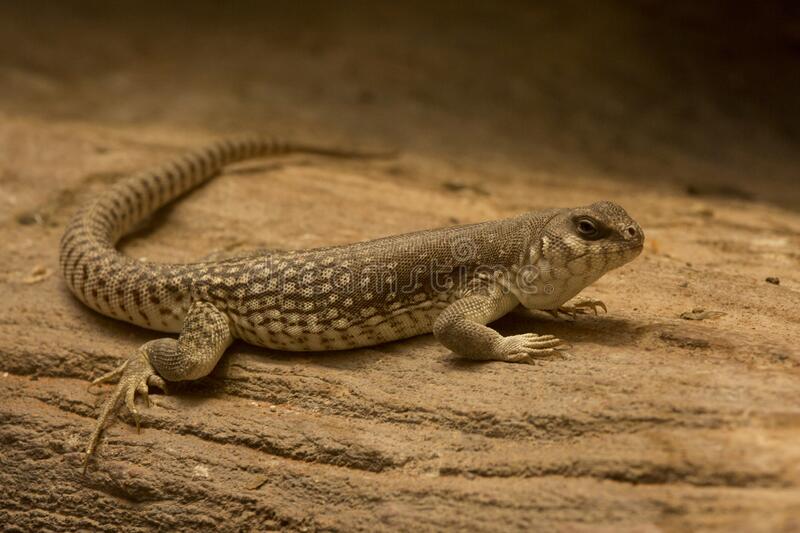Desert Iguana Dipsosaurus dorsalis Type of Animal: Iguanid Habitat: Desert, creosote bush areas, sandy creosote bush desert/desert scrubland, creosote flat desert, streambeds, arid subtropical scrub, thornscrub forest, deciduous forest, grassland, abandoned kangaroo rat/ground squirrel burrows, kit fox/desert tortoise burrows, rock crevices, sandy desert burrows near cacti Location(s): SW US & NW Mexico. Also on some islands in Gulf of California Appearance: Pale gray-tan to cream colored lizard w/ light brown reticulated pattern on back/sides, keeled dorsal scales down center of back, sides become pinkish during breeding season, pale belly Food/Diet: Creosote bushes, cactus pads, leaves, flowers, buds, fruits, vegetables, greens, berries, seeds, small nuts, poop/poop pellets, insects, insect larvae, carrion, baby desert iguanas Status in Wild: Stable Conservation: Breeding from zoos, wildlife centers, & breeders Lifestyle: Solitary or small harems of a male w/ 2-4 females Additional Info: Called: Male Female Young: Hatchling Group: Leap Weight: Male: 3 oz Female: 2 oz Gestation: 5-6 months Life Span: 7-10 years Body Length: Male: 1.3 ft Female: 1 ft Young: 0.44 ft Tail Length: Male: 1.95 ft Female: 1.5 ft Young: 0.66 ft Main predators of adults are raptors, foxes, rats, weasels, snakes, dogs, cats, coyotes, long-nosed leopard lizards, shrikes, & bobcats. Tiger Whiptail lizards prey on young. 1 of only 2 species in genus Dipsosaurus, other being Santa Catalina Island Desert Iguana. Usually breed from April-June. Each egg clutch has 2-10 eggs. Eggs hatch at temperatures of 82.4-100.4 F. Males mark territories w/ waxy secretions from femoral pores inside thighs. If threatened, they’ll dart & find shelter to go into. During courtship, male approaches female w/ rapid head-bob. These animals thrive in hot dry weather & often active during hottest part of the day. Sexually mature at a year old. They hibernate in cooler periods. Camouflage comes in handy for avoiding predators. These lizards sometimes kept as pets. These lizards frequently used in scientific research. These lizards are rather docile. Females excavate areas in sand to lay eggs. Fun Fact(s): They’re very attracted to the color yellow. Like many lizards, they can self-amputate tail to escape predators. Tail eventually grows back. Males often do push-ups to attract females & males may have push-up contests. Being active during hottest part of day may be adaptation to avoiding predators. They can run very fast, sometimes bipedally. If fleeing not possible, they’ll inflate bodies appearing twice their actual size.

